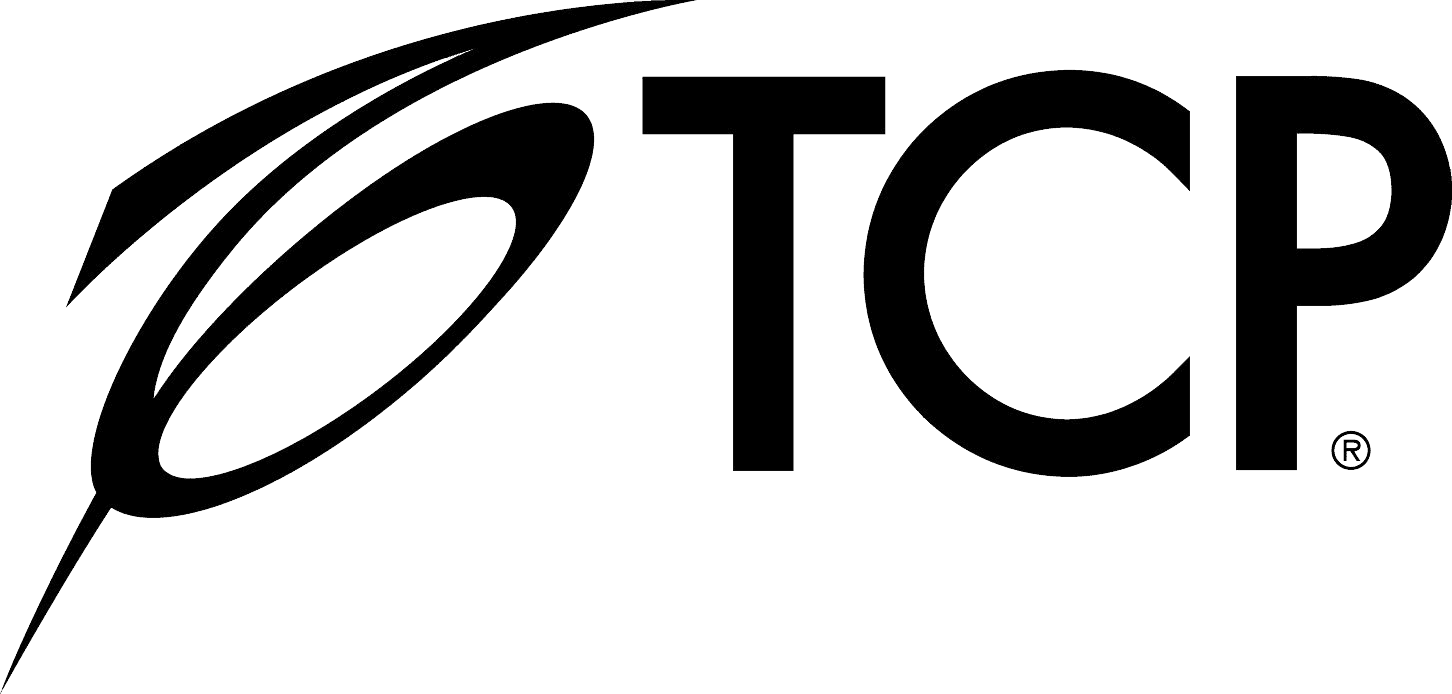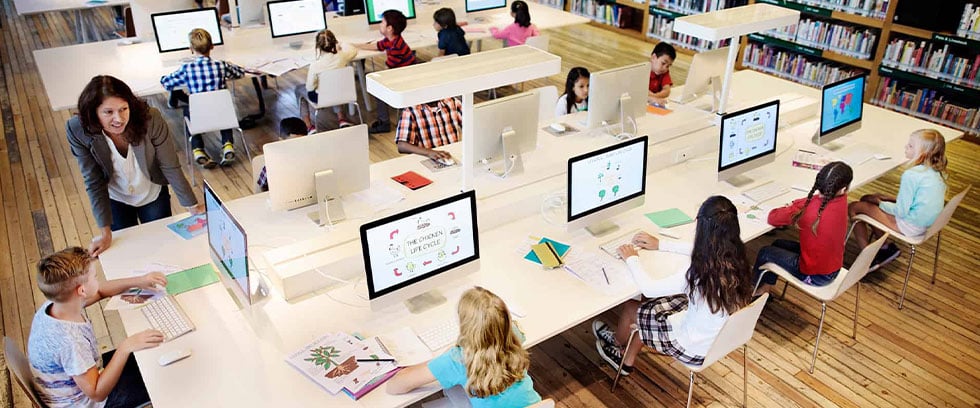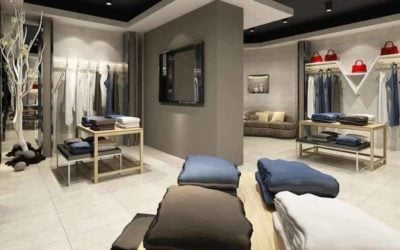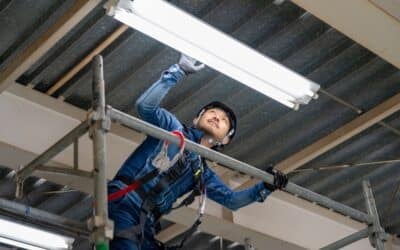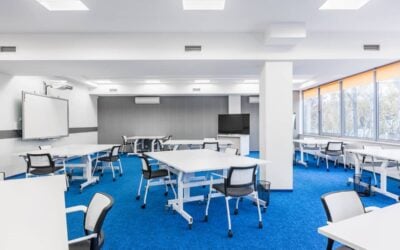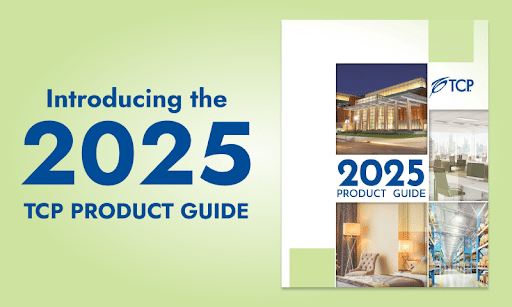The Perfect Lights for Students
Our eyes help the brain retain new information and collaborate with others, making them an important part of the learning process. But as interactive flat panels (IFPs) replace more and more chalkboards, it is more important than ever to prioritize students’ eye health.
IFPs are excellent for increasing student engagement. And of course, it is not realistic to expect the modern classroom to forgo technology. So how can we protect eye health while teaching students the digital literacy skills they’ll need for 21st century life?
Here, we’ll discuss the harmful effects of excess blue light, as well as strategies for reducing blue light exposure and the best lighting for reading in classrooms.
The Damage of Blue Lights
Today’s classrooms are strong sources of blue light. Between IFPs, Chromebooks, and fluorescent overhead lighting, it is hard to avoid excess blue light exposure in schools.
Blue light emitted in short, high-energy visible (HEV) wavelengths. It is not a new kind of light unique to technology. Blue light is present in natural sunlight. In small doses, it can be beneficial. It helps regulate our sleep and wake cycles, boosts attention, and helps with memory.
The problems with blue light start to occur when we are overexposed. Too much blue light exposure can cause headaches, eye strain, and fatigue.
One of the most significant hazards from too much blue light is disruption to sleep patterns. When we are exposed to excess blue light throughout the day, especially once the sun has gone down, it can disrupt Circadian rhythm. Disrupted sleep is especially bad for children, who need sufficient sleep to learn and play.
Helping Classrooms & Schools
So, what can schools and teachers do to help reduce students’ exposure to excess blue light?
Blue Light Filters
Students can wear blue light blocking glasses or install computer applications that will warm the color of their screen at a certain time of day. This helps prevent over exposure to blue light for a healthier classroom.
Off-Screen Homework
Since blue light exposure is especially harmful at night, consider keeping homework assignments off the computer. If you can, save computer work for during the day in class, and have students read or complete paper assignments at home.
Take Eye Breaks
Give students intentional eye breaks by guiding them through the “20-20-20” method. For every 20 minutes the students spend looking at a screen, have them look 20 feet away for 20 seconds.
The 20-20-20 method will give their eyes an opportunity to relax and prevent eye strain and fatigue. Teachers can set twenty minute timers during screen time as a reminder to take twenty second breaks.
Solistic Lighting
Want an easy and passive way to counteract blue light exposure in the classroom? TCP’s sunlight mimicking bulbs are the best lighting for reading and studying. Low in blue light, these bulbs radiate light that is similar to the sun—the healthiest source of light.
Featuring an advanced LED chip, SOListic products by TCP mimic the characteristics of sunlight. Typical LEDs produce a spike of blue light in their color spectrum. SOListic products, on the other hand, cover the full light color spectrum evenly, much like sunlight.
When you bring sunlight inside the classroom, you encourage students’ health and wellbeing. Reducing blue light exposure and supporting Circadian rhythm helps them recharge at night to arrive eager and ready to learn each morning.
TCP Lighting Solutions
Want to support the wellbeing of your students? Bring the sunlight inside. TCP’s SOListic light bulbs give you the energy-savings of eco-friendly LEDs, without the blue light spike that can disrupt Circadian rhythm.
With light that spans the full color spectrum, SOListic bulbs are the best lighting for classrooms. You can include them in wall lighting for reading and other classroom fixtures, including overhead lights and floor lamps.
Choose the most natural, sun-like LED bulb on the market with SOListic by TCP.
Shop SOListic LED lighting for classrooms.
